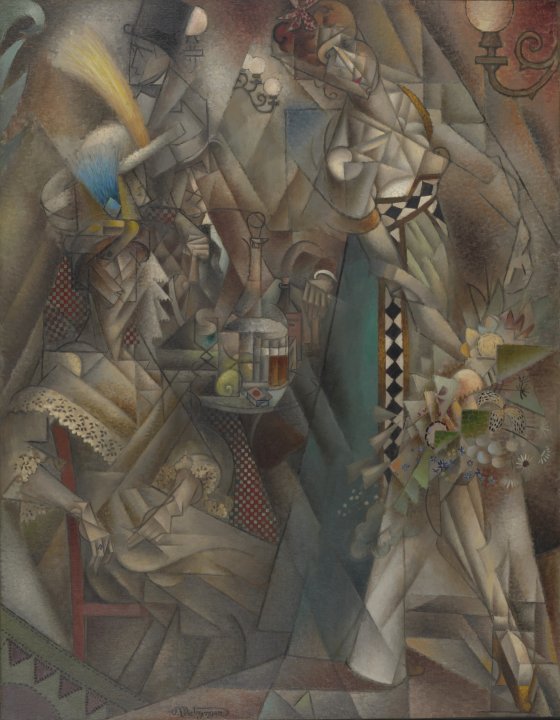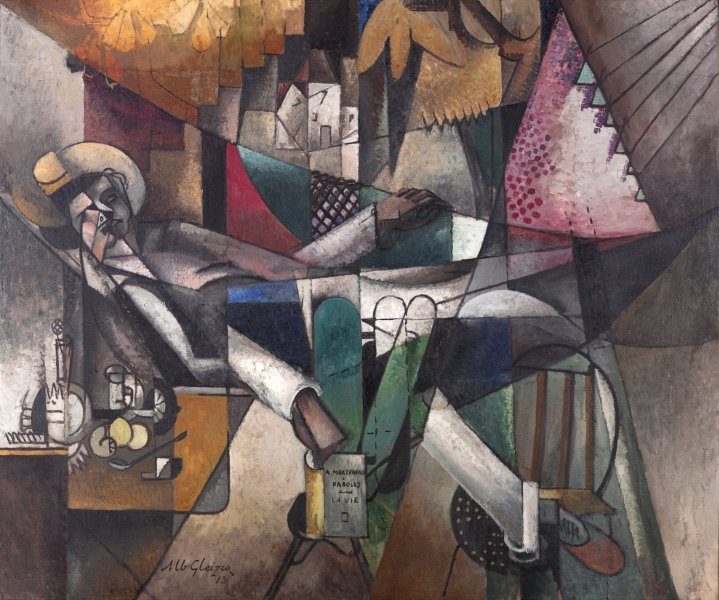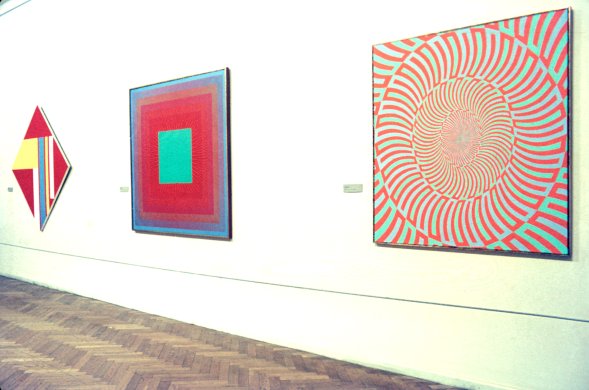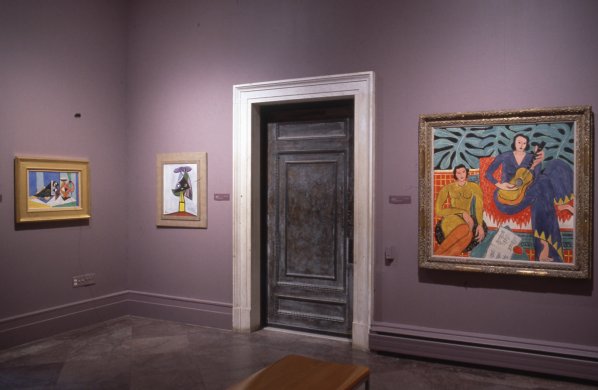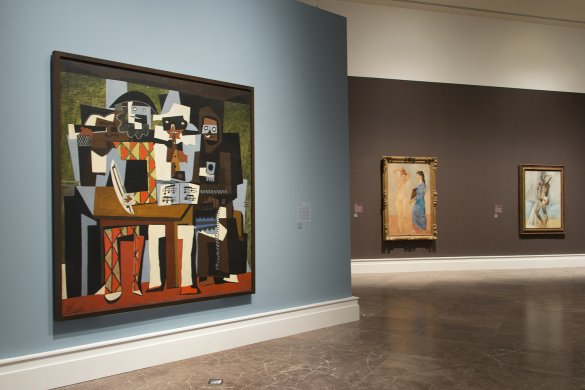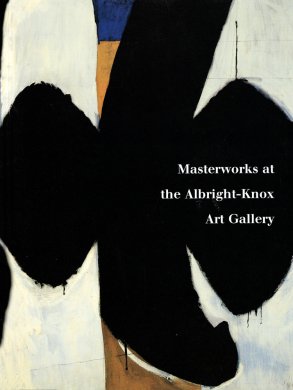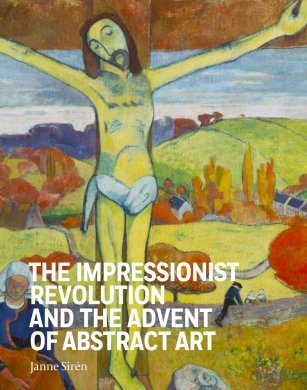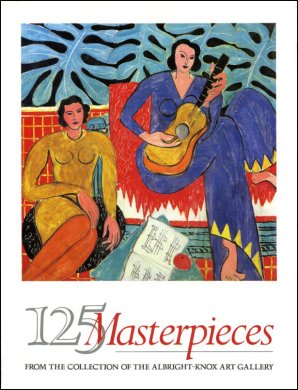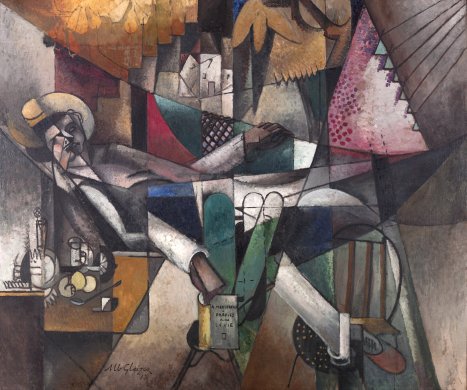Jean Metzinger
French, 1883-1956
Danseuse au café (Dancer in a Café), 1912
Artwork Details
Collection Highlight
Materials
oil on canvas
Measurements
support: 57 1/2 x 45 inches (146.05 x 114.3 cm); framed: 63 x 50 5/8 x 3 1/2 inches (160.02 x 128.59 x 8.89 cm)
Collection Buffalo AKG Art Museum
Credit
General Purchase Funds, 1957
Accession ID
1957:1
Between 1911 and 1914, Albert Gleizes and Jean Metzinger continued the development of the Cubist movement Georges Braque and Pablo Picasso initiated just a few years prior. In 1912, Gleizes and Metzinger published the influential “Du Cubisme,” which was the first major treatise on the subject. However, unlike Braque and Picasso, Metzinger was not as concerned with pursuing the pictorial implications of breaking-up form and space, and he remained closer to a faithful representation of the subject. Dancer in a Café captures the social mood and tempo of Paris prior to World War I (1914–18). This painting also testifies to Metzinger’s awareness of the Italian Futurists, who were exhibiting in the city during the time this work was created. The jerky staccato motion suggested by the dancing figure, which was new to Metzinger’s work, reflects the influence of the movement. In particular, he looked to the work of Gino Severini, who made several dancer and café studies in 1911 and 1912.
Label from Picasso: The Artist and His Models, November 5, 2016–February 19, 2017
